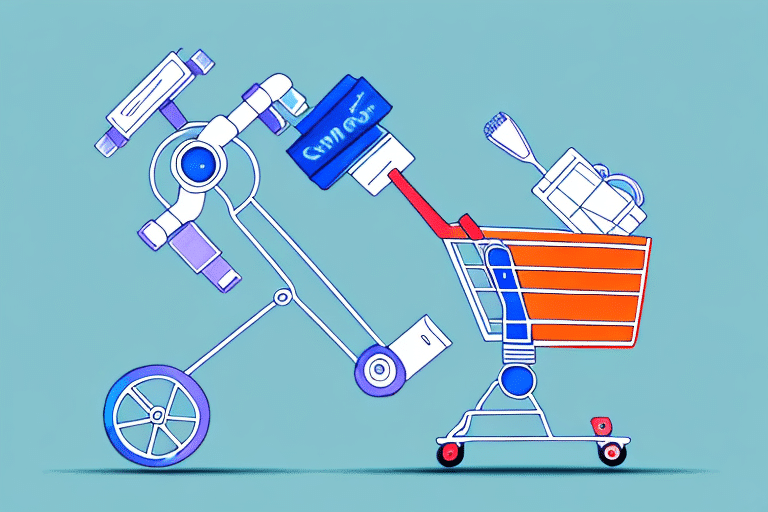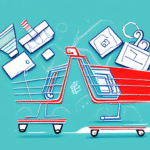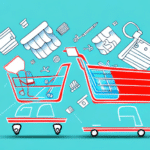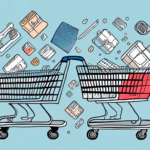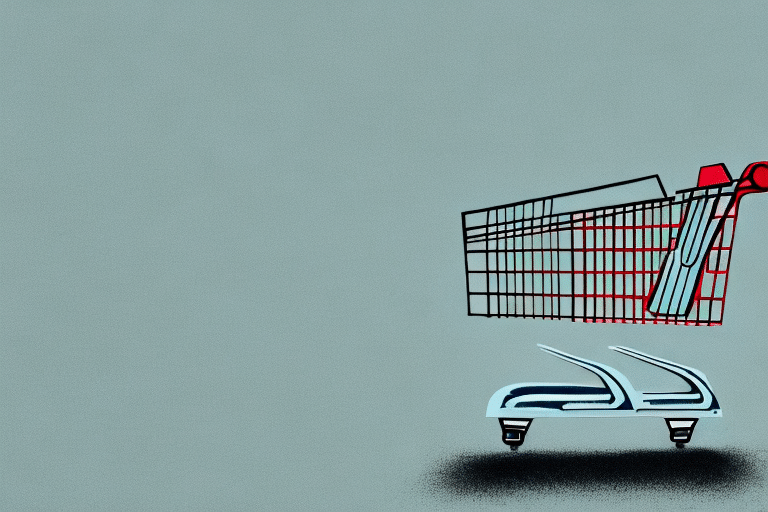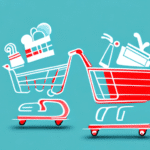Creating an Effective Abandoned Cart Workflow in HubSpot
In the world of e-commerce, abandoned carts are the bane of every retailer's existence. These are instances where potential customers add items to their cart but never complete the purchase. However, this doesn't have to be a lost opportunity. By implementing an effective abandoned cart workflow in HubSpot, you can recover these "lost" sales and boost your bottom line. In this article, we'll explore the key elements of a successful abandoned cart workflow, strategies for optimizing it, and common mistakes to avoid. Let's dive in.
Understanding the Importance of Abandoned Cart Workflows in E-commerce
Before diving into the creation of an abandoned cart workflow in HubSpot, it's essential to understand why it's a vital part of your e-commerce strategy. A study by Barilliance found that the average cart abandonment rate is approximately 69.80%. This means that for every 10 potential customers who add items to their cart, nearly 7 leave without completing their purchase. This represents a significant missed opportunity for revenue, and that's where abandoned cart workflows come into play.
What is HubSpot and How Can It Help with Abandoned Cart Workflows?
HubSpot is a powerful inbound marketing and sales platform that helps businesses grow and manage their online presence. One of HubSpot's many features is its ability to create complex workflows that can automate tasks and processes, such as abandoned cart workflows. By utilizing HubSpot's automation tools, you can create customized and personalized emails triggered when a potential customer abandons their cart. This allows you to recover lost sales and convert abandoned carts into completed transactions.
Key Elements of an Effective Abandoned Cart Workflow in HubSpot
Now that we understand the importance of abandoned cart workflows and how HubSpot can assist in crafting them, let's explore the key elements of an effective workflow:
- Timing: The timing of your abandoned cart email is critical. Aim to send the email within 1-2 hours of abandonment, as recommended by a study by SaleCycle. This ensures that the potential customer is still engaged without overwhelming them with too many emails.
- Personalization: Personalization is key to crafting effective emails that resonate with potential customers. Use their first name in the subject line and email body, and recommend products they've shown interest in.
- Clear Call-to-Action: Your email should have a clear and compelling call-to-action (CTA) that encourages the potential customer to complete their purchase. Use urgent language such as "limited stock" or "last chance" to create a sense of urgency and motivate action.
- Incentives: Consider offering incentives such as free shipping or a discount code to encourage the potential customer to complete their purchase. This can be particularly effective if they've expressed hesitancy in previous visits.
Best Practices for Crafting Abandoned Cart Emails in HubSpot
With the key elements of an effective abandoned cart workflow in mind, let's delve into best practices for crafting the actual emails.
- Subject Lines: The subject line is the first thing a potential customer will see, and it can make or break the success of your abandoned cart email. Use attention-grabbing language and include the name of the product they've left behind to pique their interest.
- Design: The design of your email should be clean, simple, and on-brand. Use images of the abandoned product and any incentives you're offering, and ensure your CTA stands out.
- Copy: Your email copy should be concise, friendly, and persuasive. Personalize the email with the potential customer's name and mention the product they've left behind. Use persuasive language and highlight the urgency of completing their purchase.
Optimizing Your Abandoned Cart Workflow for Maximum Conversions
To maximize the effectiveness of your abandoned cart workflow, it's important to continuously optimize it over time. Here are some strategies to consider:
- A/B Testing: Utilize A/B testing to determine which subject lines, designs, and copy perform best. Test different variables and make changes based on the results.
- Segmentation: Use segmentation to personalize your emails even further. Segment potential customers based on their previous purchase history or their behavior on your website.
- Continued Engagement: Don't give up on potential customers after just one abandoned cart email. Implement a series of follow-up emails that gradually increase urgency and offer more compelling incentives.
Using Personalization and Segmentation in Your Abandoned Cart Workflow
Personalization and segmentation are crucial for the effectiveness of your abandoned cart workflow. Here's how you can leverage these strategies:
- Personalization: Use the customer's name in the subject line and email body to make the message feel more personal. Recommend products based on their browsing history or items left in their cart to create a tailored experience.
- Segmentation: Segment customers based on their previous purchases or behavior on your website. For example, if they've previously purchased from your store, offer them a loyalty discount or incentive.
How to Track and Analyze Abandoned Cart Data in HubSpot
To make informed decisions about your abandoned cart workflow, it's crucial to track and analyze the associated data. HubSpot provides several reports and analytics tools that can assist with this, including:
- Abandoned Cart Report: This report shows the number of abandoned carts, the associated revenue, and the success rate of your abandoned cart workflow.
- Email Performance Report: This report displays the open and click-through rates of your abandoned cart emails, allowing you to assess their performance and make necessary improvements.
- Contact Record: HubSpot's contact record tracks a customer's entire history with your brand, including abandoned cart information. This can help you personalize future communications and offers.
A/B Testing Your Abandoned Cart Workflow for Continuous Improvement
A/B testing is an essential strategy for optimizing your abandoned cart workflow. Here's how you can use A/B testing to continuously improve your workflow:
- Test Subject Lines: Experiment with different subject lines to see which ones perform best. Analyze which language, style, and length attract the most attention.
- Test Email Content: Try different designs, images, copy, and CTAs to determine what resonates best with your audience.
- Test Timing: Experiment with different time intervals between the cart abandonment and follow-up emails to identify what works best for your potential customers.
Common Mistakes to Avoid in Your Abandoned Cart Workflow
While implementing an abandoned cart workflow, it's important to be aware of common mistakes that can hinder its effectiveness:
- Overwhelming Emails: Avoid bombarding potential customers with too many emails. Be mindful of email frequency and ensure each email has a clear purpose.
- Irrelevant Emails: Ensure your abandoned cart emails are relevant and personalized to the customer's needs and interests. Avoid sending generic emails that aren't tailored to their behavior on your site.
- Lack of Incentives: Incentives can be a powerful motivator for customers to complete their purchase, so don't neglect this important strategy.
Integrating HubSpot with Third-Party E-commerce Platforms for Improved Abandoned Cart Management
If you use a third-party e-commerce platform, don't worry—you can still implement an effective abandoned cart workflow in HubSpot. HubSpot integrates with several e-commerce platforms, including Shopify, WooCommerce, and Magento. This allows you to seamlessly manage abandoned cart workflows from within your HubSpot account, even if you're using a different platform to manage your store.
Examples of Successful Abandoned Cart Workflows Implemented by Leading E-commerce Brands
Let's look at some examples of successful abandoned cart workflows implemented by leading e-commerce brands:
- Nike: Nike employs a series of three emails to follow up with potential customers who have abandoned their carts. The emails gradually increase urgency and offer a discount code as a final incentive to complete the purchase.
- H&M: H&M uses personalized recommendations based on the items left in the cart to create a sense of urgency and encourage customers to complete their purchase. They also offer free shipping as an incentive.
- ASOS: ASOS combines personalized recommendations and incentives to encourage customers to complete their purchase. They also utilize A/B testing to continuously improve their abandoned cart workflow.
Tips for Creating a Compelling Call-to-Action in Your Abandoned Cart Email
A clear and compelling call-to-action (CTA) is crucial for the success of your abandoned cart email. Here are some tips to make your CTA more effective:
- Use Urgent Language: Create a sense of urgency by using language such as "limited stock" or "while supplies last." This can motivate potential customers to act quickly.
- Make It Stand Out: Use contrasting colors and bold fonts to ensure your CTA stands out from the rest of the email.
- Use Action-Oriented Language: Encourage action with phrases like "Complete your purchase now" or "Get your items today."
Strategies for Retargeting Customers Who Have Abandoned Their Carts
Retargeting is an essential strategy for recovering lost sales from customers who have abandoned their carts. Here are some strategies to consider:
- Facebook Retargeting: Utilize Facebook's retargeting capabilities to show potential customers ads for the items they've left in their cart.
- Google Ads Remarketing: Similar to Facebook retargeting, use Google Ads to display ads for the items customers have abandoned in their cart.
- Email Retargeting: Implement a series of follow-up emails with more compelling messages or incentives to retarget potential customers.
Measuring the ROI of Your Abandoned Cart Workflow and Identifying Areas for Improvement
Measuring the return on investment (ROI) of your abandoned cart workflow is crucial for identifying areas for improvement. Here are some key metrics to track:
- Abandoned Cart Recovery Rate: This measures the percentage of abandoned carts that are recovered using your workflow.
- Revenue Generated: This measures the total revenue generated from recovered abandoned carts.
- Email Engagement Metrics: These include open rates, click-through rates, and conversion rates.
By tracking these metrics and continuously improving your abandoned cart workflow, you can maximize its effectiveness and recover more lost sales.
Conclusion
Abandoned carts don't have to be a lost opportunity for e-commerce retailers. By implementing an effective abandoned cart workflow in HubSpot, you can recover these lost sales and boost your bottom line. Focus on personalization, clear CTAs, and incentives, and don't hesitate to experiment with A/B testing. By tracking your metrics and continuously improving your workflow, you can significantly increase the revenue generated from abandoned carts.













